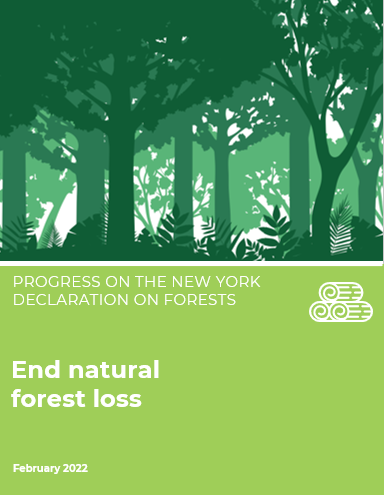Meeting the 2030 target of halting natural forest loss requires urgent and comprehensive action.
Address the drivers of deforestation.
• Creating a forest-positive economy will require increased transparency and accountability of private companies in removing deforestation from their supply chains; strengthened collaboration across sectors; and realigned economic incentives to protect rather than clear forests.
Restore deforested areas to act as a buffer to primary forest loss.
• Restoration is not a substitute for halting deforestation, but ecological restoration can support secure livelihoods and enhance environmental services.
Enhance national and international climate ambition and action.
• Countries must ramp up their ambition and actions to realized the full potential of forest to contribute to sustainable development and climate change mitigation.
Increase funding for forests and shift financing from grey to green.
• It will take an estimated USD 45-460 billion per year to protect, restore, and enhance forests in line with the Paris Agreement’s 1.5°C target, compared to USD 2.5 billion per year in green finance over the last decade.
Strengthen forest governance.
• Strong policies for forest conservation, restoration, and management, when aligned with other development and economic objectives and sufficiently enforced, are key for meeting the 2030 target. Empowering and recognizing the rights of Indigenous Peoples and local communities is an essential part of improving forest governance.
